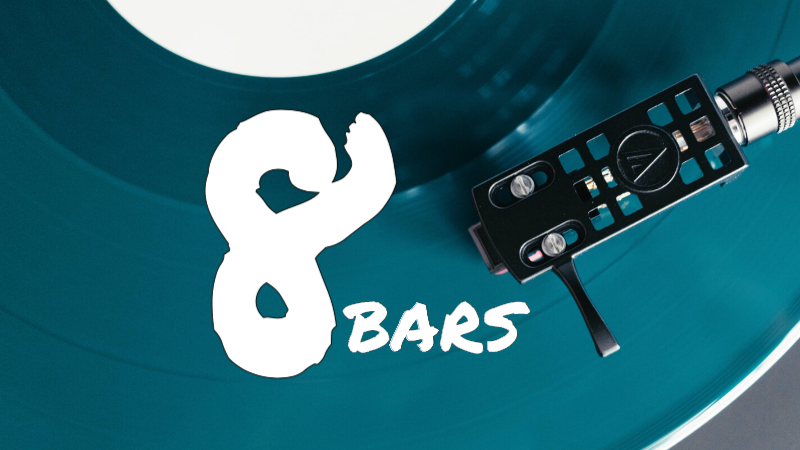
Whether you are referring to the signature portion of your song as a chorus or as hook is neither here nor there. What does matter is that you have been working very diligently to improve your efforts with writing and recording music. In order for you to feel more confident about what it is you are doing, you may need a bit of information to reinforce the conclusions you’ve probably already come to. So let’s get into The Eight-Bar Chorus.
When you’re writing a song it is divided into various parts. The highlight of the song is typically the most memorable portion of the song. What we call the hook.
Usually a song will feature its chorus three or four times throughout.
Typically the first chorus is introduced just after the first verse. The chorus can often be referred to as the hook.
The hook is some part of the song that is more exciting and catchy. Usually music will typically build in sonic excitement moving from verse to chorus. For that reason, the chorus tends to be more “hooky” than the verse.
The Eight-Bar Chorus
The chorus is also delivered in a slightly different length than the 16-bar verses. So just how many bars are in a chorus? or how many bars are in a hook?
Most modern choruses span 8-bars. The chorus highlights the song’s theme. Sticking to the eight-bar chorus structure connects with listeners, offering familiarity without excess.
Sorting this out is important in order to level up. With some practical advice, a few anecdotes, and a bit of encouragement, you’ll be on your way to writing your best work.
First we’ll describe some of the moving parts that go into song structure. Additionally we’ll need to be clear of the song and just how and why having a tight and concise chorus and song formatting structure will play to the advantage of a budding songwriter, producer and artist. So let’s get into it by starting with a deeper dive into what a chorus is.
All About A Chorus
The chorus is the song’s star, the centerpiece that everything revolves around. It’s the culmination of the journey built by the verses, a moment of harmonious convergence within the 8-bars. Whether it explodes into an anthemic singalong or settles into a moment of profound resolution, it will stand apart. It will be distinct from the rest of the song’s structure.
The chorus’s mission is simple: captivate the listener. When clever wordplay and masterful melody combine what’s left burrows into your listener’s brain and refuses to leave. You want them singing along long after the music stops. You want them humming the tune as they walk through the halls at school or work, even without their headphones. That’s when you know you’ve hit the mark.
The melody and words chosen should encapsulate the song’s essence, its heart and soul. Every element should be distilled to its purest form, creating a definitive expression of the song’s core message. Strive to make your chorus the quintessential representation of that specific thought or feeling.
To ensure effortless memorization and adoption, keep each chorus consistent. Aim for minimal, repetitive lyrics that are easy to grasp and difficult to forget. By limiting the chorus to 8-bars, you avoid creating boredom. You also leave yourself ample space for that irresistible melody, leaving the listener with no choice but to sing along.
The Significance Of The Eight-Bar Chorus
Counting 8 bars for a chorus is a widely used practice in songwriting, particularly in popular genres like pop, rock, and country. While not a strict rule, it serves several important functions:
Length and Memorability:
- Manageable length: An 8-bar chorus is relatively short and easy to remember, making it more likely for listeners to sing along and retain the melody.
- Focus and impact: Conciseness helps focus the listener’s attention on the core message and creates a stronger impact.
Structural Balance:
- Proportionality: An 8-bar chorus typically balances well with the length of verses, bridges, and outros, creating a sense of proportion and flow in the song structure.
- Variety and contrast: The shorter length of the chorus provides a contrast to the verses, preventing the song from becoming monotonous.
Historical Precedent and Listener Expectation:
- Traditional structure: Many popular songs throughout history have employed the 8-bar chorus format, leading to a widespread expectation among listeners.
- Familiarity and comfort: The familiar structure provides a sense of comfort and predictability for listeners, making them more likely to enjoy the song.
Practical Advantages:
- Simplicity and ease of composition: Counting bars provides a concrete framework for structuring the chorus, making it easier for songwriters to compose and arrange.
- Versatility and flexibility: The 8-bar format allows for considerable variation within the structure, accommodating different melody patterns and lyrical content.
However, it’s important to note that the eight-bar chorus rule is not entirely rigid:
- Variations and exceptions: Successful songs often deviate from this standard, using longer or shorter choruses to suit the specific needs of the song.
- Creative freedom: Ultimately, songwriters have the freedom to experiment and break away from traditional structures to create unique and impactful choruses.
Counting 8 bars for a chorus provides a valuable guideline for songwriters, offering a balance between length, memorability, structure, listener expectation, and creative freedom. While not a strict rule, understanding its significance can be a helpful tool for composing effective and engaging choruses.
Arranging The Chorus Into The Song Structure
The typical song structure of a most modern popular music is as follows:
- Intro
- Verse 1
- Chorus
- Verse 2
- Chorus
- Bridge
- Chorus
- Chorus
- Outro
Knowing that is important. There is an unspoken agreement of sorts between we the writers and our listeners. We need to provide something to them that at a base level is easy to adopt. And, that is true especially if we want them to listen to it more than once.
All modern music listeners have already been conditioned and induced into familiarity with common song structure. That’s true whether they are aware of that or not. It doesn’t matter if they have any capacity to count bars and beats. You listeners certainly know what is to be expected of a song. Your job as an artist isn’t necessarily to reinvent the wheel. But, rather it is to excel at production within the construct.
When you as a songwriter do your job and hit your mark to effect. The result should send delight to your audience at large.
After you have a real sticky and memorable chorus in mind you should introduce after the first verse. From there you can just copy and fly it over to play after the second verse.
After the second chorus you can introduce a bridge. The bridge should lead back into the third chorus and the outro. If you have some ideas for a grand finale laden with fire works this is where it will fit. Go ahead and land some well placed vocal flyovers and close your song with a bang.
How And When To Use A Pre-Chorus
If the transition between your verse and chorus feels jarring, consider adding a pre-chorus. This structural tool acts as a bridge, smoothling the transition between the two sections.
Think of it this way: you’ve carefully crafted your 8-bar chorus, but it feels too abrupt coming directly after the verse. By “borrowing” a few bars from the verse, you can build momentum and create a natural ramp leading into the chorus. This seamlessly integrates the two sections while still adhering to the popular song structure.
These pre-choruses should be implemented after both verses and feature repetitive lyrics and melody phrasing. This repetition acts as a stepping stone, preparing the listener for the energy and focus of the chorus.
In Conclusion
While some argue for complete freedom in songwriting, there are, in fact, unspoken guidelines and expectations that listeners have come to anticipate. You can choose to defy these conventions or embrace them. Remember, however, that defying them doesn’t guarantee success or financial viability.
This guide on the eight-bar chorus intended to offer a basic understanding of typical chorus structure and provide you with the tools to apply it to your own projects. It also explores potential alternatives and additions that may be relevant along the way.
Ultimately, it’s up to you to decide how to leverage this information to make informed decisions and achieve your desired results. I hope this has provided you with a glimpse into the world of songwriting. I hope that you have a great time sharpening your skills. And, I wish you the best!
Equipped with this newfound understanding of chorus structure, you’ll soon be crafting catchy hooks and posting your next hits on Spotify for the world to hear.
Now go and get to it!
Good luck.
